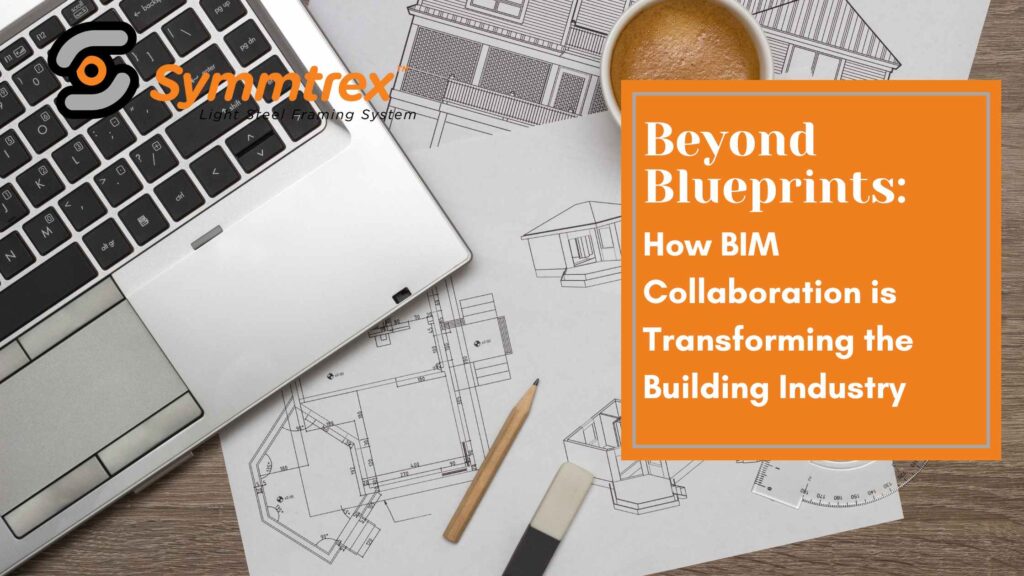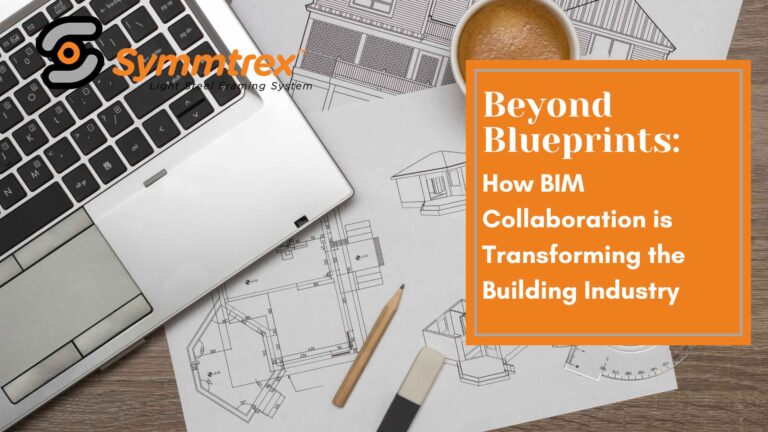In the past, construction projects relied heavily on paper blueprints and traditional methods of communication among architects, engineers, and contractors. However, the advent of Building Information Modeling (BIM) has revolutionized the building industry. BIM collaboration, in particular, has become a game-changer, enabling stakeholders to work together more efficiently and effectively. This blog post explores how BIM collaboration is transforming the building industry, enhancing project outcomes, and fostering innovation.

What is BIM Collaboration?
Understanding Building Information Modeling (BIM)
Building Information Modeling (BIM) is a digital representation of the physical and functional characteristics of a facility. It provides a shared knowledge resource for information about a facility, forming a reliable basis for decision-making throughout its lifecycle, from inception to demolition.
The Essence of Collaboration in BIM
BIM collaboration involves various stakeholders—architects, engineers, contractors, and owners—working together within a common data environment. This collaborative approach ensures that all parties have access to the same up-to-date information, reducing errors, improving efficiency, and enhancing overall project success.
The Benefits of BIM Collaboration
Improved Communication and Coordination
One of the key advantages of BIM collaboration is the improvement in communication and coordination among project stakeholders. Traditional construction processes often suffer from miscommunication and fragmented information, leading to costly errors and delays. BIM collaboration tools allow for real-time sharing and updating of information, ensuring everyone is on the same page.
Enhanced Design Visualization
BIM collaboration offers superior design visualization capabilities. With 3D models, stakeholders can better understand the design intent, identify potential issues early, and make informed decisions. This leads to fewer design changes during construction, saving time and resources.
Increased Efficiency and Productivity
By streamlining workflows and automating repetitive tasks, BIM collaboration increases efficiency and productivity. For example, clash detection tools can automatically identify conflicts between different building systems (e.g., HVAC and electrical), allowing for resolution before construction begins. This proactive approach minimizes disruptions and keeps projects on schedule.
Cost Savings and Risk Reduction
Effective BIM collaboration can lead to significant cost savings. By detecting and resolving issues early, projects can avoid costly rework. Additionally, the accurate quantity take-offs and cost estimations provided by BIM models help in budgeting and financial planning. Risk is also reduced as stakeholders have a clearer understanding of project scope and requirements.
Real-World Applications of BIM Collaboration
Case Study 1: The Sydney Opera House
The Sydney Opera House, a UNESCO World Heritage site, underwent a major renovation with the help of BIM collaboration. The project team used BIM to create detailed 3D models of the existing structure, which aided in planning and executing the renovation. The collaborative approach ensured that all stakeholders could contribute their expertise, resulting in a successful and timely renovation.
Case Study 2: The Crossrail Project
The Crossrail project in London, one of Europe’s largest infrastructure projects, utilized BIM collaboration extensively. The project involved numerous contractors and suppliers. BIM enabled seamless coordination and data sharing among all parties, leading to efficient construction and reduced delays. The use of BIM also facilitated maintenance planning and operation management for the railway.
The Future of BIM Collaboration
Integration with Emerging Technologies
As technology advances, BIM collaboration is poised to integrate with emerging technologies such as the Internet of Things (IoT), augmented reality (AR), and artificial intelligence (AI). IoT can provide real-time data from sensors embedded in buildings, feeding information back into BIM models for ongoing maintenance and optimization. AR can enhance on-site construction by overlaying BIM models onto the physical environment, providing workers with precise guidance. AI can analyze BIM data to predict potential issues and suggest optimal solutions.
Greater Emphasis on Sustainability
Sustainability is becoming a critical consideration in the building industry, and BIM collaboration plays a vital role in achieving sustainable goals. By providing accurate data and simulations, BIM can help design energy-efficient buildings, optimize resource usage, and reduce waste. Collaborative efforts ensure that sustainability considerations are integrated into every stage of the project, from design to construction to operation.
Expansion Beyond Construction
While BIM collaboration is primarily associated with the construction phase, its benefits extend throughout the entire lifecycle of a building. Facility managers can use BIM models for maintenance and operation, ensuring that the building performs optimally over its lifespan. Additionally, BIM can support disaster recovery and renovations by providing detailed, up-to-date information about the building’s structure and systems.
Overcoming Challenges in BIM Collaboration
Addressing Interoperability Issues
One of the main challenges in BIM collaboration is interoperability between different software platforms. Stakeholders often use various BIM tools, leading to difficulties in sharing and integrating data. The industry is working towards standardization and the development of open data formats to address this challenge, promoting seamless collaboration.
Ensuring Data Security
With the increased sharing of digital information comes the need for robust data security measures. Protecting sensitive project data from cyber threats is crucial. Implementing secure data protocols and educating stakeholders about best practices can mitigate risks and ensure the integrity of BIM models.
Fostering a Collaborative Culture
Successful BIM collaboration requires a cultural shift towards greater openness and teamwork. Organizations must invest in training and encourage a mindset that values collaboration over competition. Leadership plays a key role in fostering this culture and demonstrating the benefits of BIM collaboration.
Conclusion
BIM collaboration is transforming the building industry by enhancing communication, improving efficiency, and reducing risks. Its ability to provide a single source of truth and facilitate real-time data sharing makes it an invaluable tool for modern construction projects. As technology continues to evolve, the potential for BIM collaboration will only grow, offering new opportunities for innovation and sustainability in the built environment. Embracing BIM collaboration today sets the foundation for a more efficient and resilient future in construction.
Ready to transform your next project with BIM collaboration? Start by investing in the right tools and fostering a culture of collaboration within your organization. The future of construction is here, and it’s beyond blueprints.


